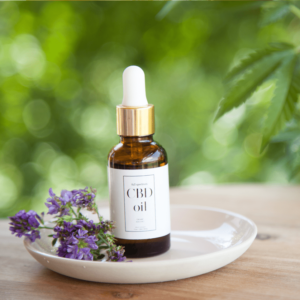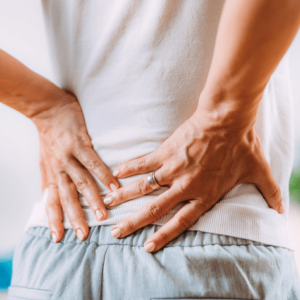Each day, about 40 Americans die from prescription painkiller overdoses. A medicine designed to help patients deal with pain from illnesses and injuries has turned into something more dangerous than health experts ever anticipated. According to the Centers for Disease Control and Prevention (CDC), up to 25% of people who receive prescription opioids for non-cancer-related primary care become addicted to the substance, with drugs like methadone, oxycodone and hydrocodone being the most commonly abused.
The statistics are alarming and frightening. Finally, the medical industry is taking steps to curb the opioid addiction epidemic. The CDC is urging doctors and health professionals to be very cautious when prescribing painkillers and recommends they avoid it altogether for certain patients’ chronic pain treatment.
FOLLOW US ON FACEBOOK & INSTAGRAM
What Does the New Opioids Guidance Mean for Patients?
With the exception of those receiving end-of-life treatment or cancer care, doctors are now advised to, if possible, simply not prescribe opiates to patients with chronic pain or those suffering from injuries. Although the CDC recognizes that there are some situations in which the benefits of opioids outweigh the risks, current CDC guidelines recommend that doctors try other drugs, such as anti-inflammatories, as first-line treatments before prescribing opiates for pain relief. The CDC also recommends starting with a low dose of opioids and building up to a dose that’s effective at relieving pain, rather than immediately prescribing a high dose.
Many in the medical industry believe that the risk of opioid addiction outweighs the benefit of temporary pain relief. After all, the numbers don’t lie; painkillers are deadly and are currently abused by nearly two million people. There’s no reason to risk the lives of patients just so they can be more comfortable.
Though doctors are under no legal obligation to follow such directives, what the CDC says carries a great deal of weight in the health care industry, and this instruction will undoubtedly lead to a significant reduction in prescriptions for painkillers to manage chronic pain.
However, the directive does add that, when benefits are greater than risks, it’s OK to prescribe opiates. Health professionals are strongly advised to talk to patients about using the painkiller and identify the potential of a substance abuse disorder. Exploring alternatives, such as holistic therapies, exercise and nonsteroidal anti-inflammatory medicine, such as aspirin, is another option.
Could Medical Marijuana Be a Better Solution Than Opioids?
Just because doctors won’t be prescribing painkillers as much doesn’t mean people have to struggle through life. In addition to exercising, eating well and using holistic healing measures, medical marijuana represents a capable and safe alternative to painkillers.
Stereotypes surrounding the drug may turn some folks in the health care industry off, but research is proving that patients benefit from the use of this medicinal plant. Specifically, a comprehensive study undertaken by HelloMD of a community of patients using medical marijuana revealed very promising results on the effectiveness of marijuana as a medicine. Eighty-four percent of survey respondents claim that medical marijuana is extremely effective in relieving their symptoms. Many also reported using the drug to treat other health symptoms, including anxiety, insomnia, nausea, mental health disorders and stress.
Medical Marijuana Is Effective at Treating Chronic Pain Symptoms
Patients are using medical marijuana for a variety of reasons and are reporting excellent results. The survey by HelloMD found that 84% of patients using medical marijuana said that cannabis offered them relief from their symptoms. As well, very few reported negative consequences when using cannabis for medicinal purposes. In fact, 96% of respondents said they’d recommend it to a family member, friend or colleague in need. In short, patients see improvement when they use medical cannabis, with little to no side effects or other issues. That can’t be said for prescription painkillers, which—as the research proves—leads to a high rate of addiction and many deaths.
You Don’t Have to Smoke Medical Marijuana
Some may be turned off by the fact that marijuana is traditionally ingested by smoking the plant, but that isn’t the only method of ingestion. HelloMD discovered that many women and older people, for instance, preferred topical creams and fragrance products. Younger males, on the other hand, chose to smoke and vape. Folks in the industry are inventing new ways to take cannabis every day—with edibles, tinctures, oils and capsules—to suit any preference; patients aren’t forced to inhale. Additionally, doses can be adjusted to meet individual needs.
Medical Marijuana Won’t Lead to Overdoses
Unlike opioids, it’s very hard to overdose on medical marijuana. In fact, it has never been shown that marijuana alone has caused an overdose. Overdose amounts suggested by some scientists are so high that it would be impossible for anyone to take that much. Hence, cannabis is a safe solution.
Opioid overdoses tragically claim many lives. They also pose huge costs to ER departments, who must administer emergency treatments to quickly counteract the effects of the drugs taken. Reducing the rate of overdose could therefore have many important benefits for society.
For those suffering with chronic pain, finding a safe and effective way to improve overall well-being is a priority. The danger of prescription painkillers is all too real. Medical marijuana has been shown to be safer than alcohol and tobacco—two completely legal substances. Additionally, marijuana carries little risk of dependence, a characteristic other drugs can’t claim.
Simply put, if health care professionals want a worthy and safe alternative to prescription opioids, the solution is to go green. Go for medical marijuana.
Photo Credit: Army Medicine
If you’re new to cannabis and want to learn more, take a look at our Cannabis 101 post. HelloMD can help you get your medical marijuana recommendation; it’s easy, private and 100% online.






